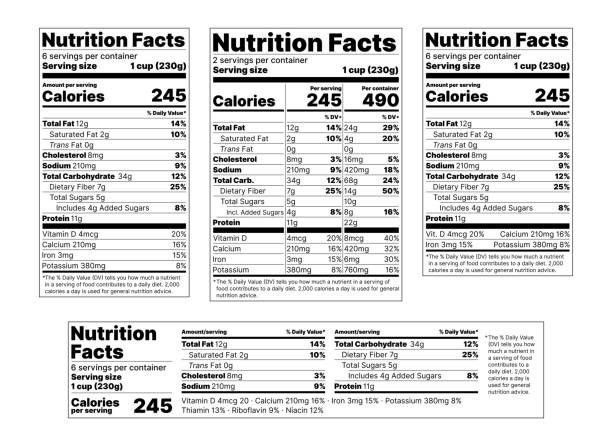Why is reading food labels on products so important?
- Tips From Pips

- Feb 17, 2023
- 3 min read

Blog #268
When you are on your own health happiness journey, it is so important to know what you are feeding your body! What are the nutrition facts on the products you are buying? How much of this product is a serving size for one person?
How many calories? What are the ingredients? Are they healthy? How do you know?
Reading food labels can be so confusing if you don’t know what to look for and what the terms all mean. When you are first starting out on your healthy diet, it is very important to know what you are buying and what you are putting into your body.
Before I started my journey, I knew little bit about reading labels, and I didn’t really pay attention to what all the ingredients were or what the percentages of sugar, carbs, fats, etc. all meant.
Not understanding how to read these labels is what caused me to become obese in the first place. I wasn’t paying attention to the serving sizes, or the sugars, fat, or carbs. I started paying attention to the serving size and calories after a while, but did not pay attention to the other ingredients or % of the ingredients in the product.
I thought because I started paying attention to the calories and serving sizes I would lose weight. But I wasn’t, and I wondered why I never really felt that good. Always tired, addicted to sugar, and always hungry. Not knowing how to read the labels led me to become not only obese, but a diabetic as well.
Breaking down the food labels and understanding how to read them improved my overall health by 100%. Once I knew what the terms meant, what sizes were portion control, what net carbs meant, what % of sugar was acceptable and what % of fat and salt were healthy amounts, I was on my way to a healthier diet and starting losing my weight the correct life-long way.
Let’s start to break it down by recommended portion control sizes first:
This handy little chart shows you a guide to what one serving size should look like:

Next, let’s look at Good Carbohydrates vs. Bad Carbohydrates (or what you should eat very minimal of to keep your body healthier) I personally think if you use moderation on any carbs in your diet, you should be good to go – but using this chart gives you a great idea of what are healthier alternatives for your body!

Next, let’s look at the food label in detail and break it down:

Next, here is a food label with more than one serving broken down:

It is so important to pay attention to the serving size on the package. Observing that this package of pretzels for instance is 3 pretzels and if you eat the whole bag, obviously that is more than the serving size and more calories!
Next on to “FATS”:

What is the daily recommended allowance?
“The USDA recommends getting up to 35 percent of your calories from fat.
This means up to 97 grams of fat per day in a 2,500-calorie diet. up to 66 grams of fat per day in a 2,000-calorie diet.”
What are fats anyway?
Fats are one of the three macronutrients. The body absorbs them from food and uses them for energy and other functions.
How much fat is healthy to eat per day?
The appropriate amount of fat to eat will depend on your calorie requirements for weight loss or maintenance. It’ll also be based on your eating style and diet.
What about “Salt” in your diet?

Americans eat on average about 3,400 mg of sodium per day. However, the Dietary Guidelines for Americans recommends adults limit sodium intake to less than 2,300 mg per day—that's equal to about 1 teaspoon of table salt!
So, there you have it! Portion control and moderation play a huge part in your “Health Happiness” journey, but the more knowledge you know on reading food labels, the more knowledge you will gain to lose weight and live a happier, healthier, longer life!
Next up – What are all these ingredients in products? What do they mean? Are they good or bad for your body?
Watch for this next blog coming next week for details!
Until then – HAPPY READING!
Be the change you want to be with more knowledge for the right change that will last a lifetime!







Comments